Flora, Fauna & Hot Springs
Flora
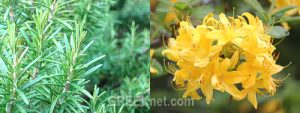
With almost 1,400 plant species and subspecies, the flora of Lesvos ranks among the richest ones in the world. The southeast portion of the island has lush vegetation, while its western third presents a barren landscape. Many areas, like the gulfs of Gera and Kalloni are included in the European protected areas network Natura 2000.

An extensive olive grove consisting of approximately 11.000.000 olive trees covers the greatest part of the island. Through its millenary presence, the olive tree has established itself as the most distinctive and dominant plant species on Lesvos, and one to which the birds and other animals on the island have adapted themselves.
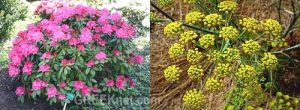
Other species dotting the landscape of Lesvos are the Wild Olive (Olea Oleaster), the Myrtle (Myrtus Communis), the Oleander (Nerium oleander), the Strawberry Tree (Arbutus unedo), the Kermes Oak (Quercus coccifera), the Cistus (Cistus creticus), the Tree Heath (Erica arborea), the Bay Laurel (Laurus nobilis), the Spanish Broom (Spartium junceum) and the Downy Oak (Quercus pubescens).
Between Gera and Agiassos grows is an extensive chestnut (Castanea sativa) forest. In the area of the Profitis Ilias peak there is a small, yet rare European Black Pine (Pinus negra) forest, while most of the island’s southeast is covered by Turkish Pine (Pinus brutia) forests.
Fauna
The olive groves, the pine woods and oak forests of Lesvos offer refuge to a great number of animal species. Researchers have identified 252 birds, 24 mammals, 24 reptiles and 24 amphibians on Lesvos. One of the most interesting mammals is the Persian Squirrel (Sciurus anomalus), which is found nowhere else in Europe. The largest predator on the island is the Red Fox (Vulpes Vulpes), followed by the Beech Marten (Martes Foina), the Least Weasel (Mustela Nivalis), the Cape Hare (Lepus Capensis) and the White-chested Hedgehog (Erinaceus Concolor).
The reptiles of Lesvos include the Greek Tortoise (Testudo Graeca) and the Caspian Turtle (Mauremys caspica). There are also thirteen snake species (Coluber jugularis caspius), (Malpolon monspessulanus), (Elaphe situla), (Coluber najadum), (Eryx jaculus turcicus) and the Rock Viper (Vipera xanthina). The island is also home to numerous lizards, like the Balkan Green Lizard (Lacerta trilineata), the Snake-eyed lizard (Ophisops elegans), the Sheltopusik (Ophisaurus apodus), the Stellion (Agama stellio) and the European Copper Skink (Ablepharus kitaibelii).
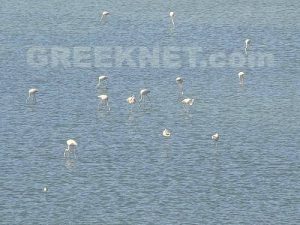
Numerous birds are found on Lesvos, with the Chukar Partridge (Alectoris chukar) being one of the most interesting ones. The species living in the olive groves include the Common Blackbird (Turdus merula), the Song Thrush (Turdus philomelos), the European Starling, the European Robin (Erithacus rubecula), the Chaffinch (Frigilla coelebs), the Winter Wren (Troglodytes troglodytes), the Crested Lark (Galerida cristata), the Skylark (Alauda arvensis), the Blackcap (Sylvia atricapilla), the Middle Spotted Woodpecker (Dendrocopos medius) and, in the summer, the Wheatear (Oenanthe oenanthe & Oenanthe hispanica). Rarer species include the Sardinian Wambler (Sylvia melanocephala) and Sylvia olivetorum, a relative species which lives exclusively in the olive groves. Other species to be found on Lesvos are the Short-toed Treekeeper (Cethria brachydactyla), the Cuckoo (Cuculus canorus), the Nightingale (Luscinia megarynchos), the Hoopoe (Upupa epops), the Dunnock (Prunella modularis) the Fieldfare (Turdus pilaris & T. Iliacus) and endangered species such as Eleonora’s Falco (Falco Eleonorae), the Lesser Kestrel (Falco naumanni), Krüper’s Nuthatch (Sitta krueperi), which is found nowhere else in Europe, the Black Storck (Ciconia Nigra), flamingos and egrets.
The waters surrounding Lesvos present a rich sea fauna. In the sea area west of Vatera, by the cape of Aghios Fokas, live the Common Dolphin and the Bottle-nose Dolphin.
Hot Water Springs of Lesvos
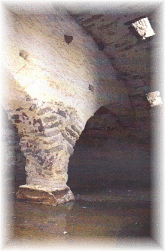 Thermi:
Thermi:Temperature 49.9oC.
Ferruginous.
Radioactivity 0,8 units.
Appropriate for the cure of rheumatism arthritis, kidneys, hardening of the arteries, etc.
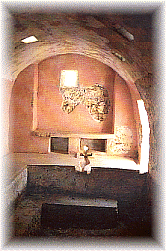
Polichnitos:
Temperature 76-91oC, the hottest in Europe.
Radioactivity 1.6-6 units.
Appropriate for the cure of rheumatism, arthritis, gynecological and dermatological infections.
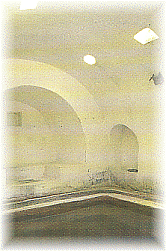
Agios Giannis of Lisvori:
Temperature 69oC, they contain chlorine and natrium.
Radioactivity 2.6 units.
Curative for rheumatism, arthritis, gynecological and dermatological infections.
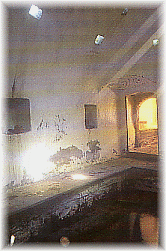
Eftalou of Mithymna (Molivos):
Temperature 69oC, they contain chlorine and natrium.
Radioactivity 2.6 units.
Curative for rheumatism, arthritis, gynecological and dermatological infections.

Gulf of Gera:
Temperature 39.7oC.
Radioactivity 1.8 units.
Recommended for rheumatism, arthritis, gravel, bronchitis, etc.
